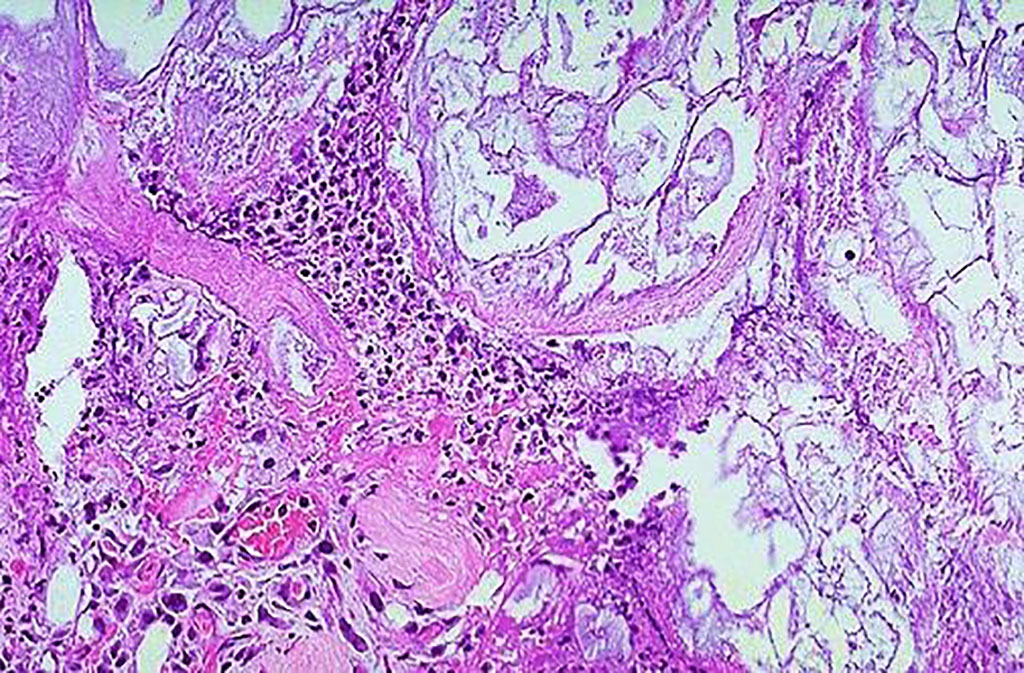Heparin-Binding Protein Levels Dramatically Increase in Acute Pancreatitis
By LabMedica International staff writers
Posted on 25 Sep 2021
Heparin-binding protein (HBP), also known as CAP37 and azurocidin, is a glycoprotein stored in azurophilic granules and secretory vesicles in neutrophils that is released upon neutrophil activation early in the systemic inflammatory response. Posted on 25 Sep 2021
Most patients with acute pancreatitis (AP) present with mild, self-limiting disease, with little or no need for hospital care. However, 20%–25% of patients develop a more severe and potentially life-threatening condition with progressive systemic inflammatory response syndrome (SIRS).

Histopathology of acute pancreatitis: necrosis of pancreatic parenchyma (lower left) with acute inflammation and fat necrosis (right and upper part of photograph) (Photo courtesy of Florida State University College of Medicine)
Clinical Scientists at the Skåne University Hospital (Malmö, Sweden) enrolled 260 patients with acute pancreatitis who were admitted to the hospital between 2010 and 2013. The mean age was 63.8 ± 18.7 years, and 50% of patients were female. EDTA plasma samples were obtained upon admission to the hospital, centrifuged at 2,000 rpm for 10 minutes (25 °C) and stored at − 80 °C until analysis.
Measured levels of heparin-binding protein upon hospital admission in 204 patients with confirmed acute pancreatitis served as the primary outcome. Secondary endpoints included associations between heparin-binding protein concentrations, disease severity and fluid balance. HBP concentration was determined by an enzyme-linked immunosorbent assay (ELISA), and in addition, C-reactive protein (CRP) was analyzed using standard methods.
The investigators reported that the overall median HBP concentration in this study was 529 (307–898) ng/mL. In mild pancreatitis, the median HBP level was 527 (301–887) ng/mL; in moderately severe cases, it was 529 (338–955) ng/mL; and in the severe group, the median HBP was 640 (383–1465) ng/mL. The CRP on the day of admission was 28 (11–59) mg/L, 30 (19–97) mg/L and 122 (83–170) mg/L in the mild, moderately severe and severe groups, respectively. The team also found that the fluid balance between patients with mild compared with moderately severe and severe pancreatitis was significantly different after day 2 (83 versus 510 versus 2,260 mL). However, there was no association between heparin-binding protein concentration and fluid balance.
The authors concluded that HBP levels are dramatically increased in patients with AP, and these levels far exceed those previously reported in other conditions. In their study, they did not observe any significant correlation between HBP levels and disease severity or the need for intravenous fluid. Additional studies on HBP are needed to further explore the role of HBP in the pathogenesis of AP and its possible clinical implications. The study was published on August 28, 2021 in the journal BMC Gastroenterology.
Related Links:
Skåne University Hospital














